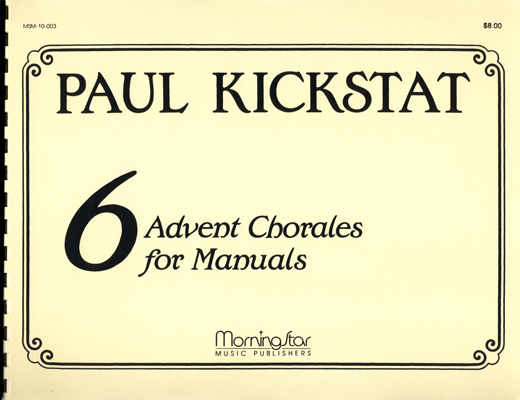- |
User Links
Kommt, Kinder, lasst uns gehen
Kommt, Kinder, lasst uns gehen
Author: Gerhard TersteegenPublished in 93 hymnals
Author: Gerhard Tersteegen
 Tersteegen, Gerhard, a pious and useful mystic of the eighteenth century, was born at Mörs, Germany, November 25, 1697. He was carefully educated in his childhood, and then apprenticed (1715) to his older brother, a shopkeeper. He was religiously inclined from his youth, and upon coming of age he secured a humble cottage near Mühlheim, where he led a life of seclusion and self-denial for many years. At about thirty years of age he began to exhort and preach in private and public gatherings. His influence became very great, such was his reputation for piety and his success in talking, preaching, and writing concerning spiritual religion. He wrote one hundred and eleven hymns, most of which appeared in his Spiritual Flower Garden (1731). He… Go to person page >
Tersteegen, Gerhard, a pious and useful mystic of the eighteenth century, was born at Mörs, Germany, November 25, 1697. He was carefully educated in his childhood, and then apprenticed (1715) to his older brother, a shopkeeper. He was religiously inclined from his youth, and upon coming of age he secured a humble cottage near Mühlheim, where he led a life of seclusion and self-denial for many years. At about thirty years of age he began to exhort and preach in private and public gatherings. His influence became very great, such was his reputation for piety and his success in talking, preaching, and writing concerning spiritual religion. He wrote one hundred and eleven hymns, most of which appeared in his Spiritual Flower Garden (1731). He… Go to person page >Text Information
| First Line: | Kommt, Kinder, lasst uns gehen |
| Author: | Gerhard Tersteegen |
| Language: | German |
| Copyright: | Public Domain |
English
- A Choice Selection of Hymns. 2nd ed. #aad68
- A Selection of Hymns from Various Authors, Supplementary for the Use of Christians. 2nd ed. #d95
- Die Gemeinschaftliche Liedersammlung, zum Allgemeinen Gebrauch des wahren Gottesdienstes, aus vielen Liedernbuechern gesammelt ... #d102
- English and German Gospel Songs, or The Ebenezer Hymnal #d166
- Liederbuch für die Jugend #d75
German
- A Collection of Hymns: designed for the use of the Church of Christ #L93
- Allgemeine Lieder-Sammlung: zum Gebrauch für den privaten und öffentlichen Gottesdienst. (6th Aufl.) #A16
- Allgemeine Lieder-Sammlung: zum Gebrauch für den privaten und öffentlichen Gottesdienst. (6th Aufl.) #121
- Das Christliche Gesang-Buch #d165
- Das Geistliche Saitenspiel: oder, Eine Sammlung auserlesener, erbaulicher, geistreicher Lieder zum Gebrauch aller Gottliebenden Seelen, insonderheit für dei Gemeinen der Evangelischen... (1st Aufl.) #264
- Das kleine Davidische Psalterspiel der Kinder Zions #ad18
- Das kleine Davidische Psalterspiel der Kinder Zions #d18
- Das Kleine Davidische Psalterspiel der Kinder Zions: von alten und neuen auserlesenen Geistes-Gesängen allen wahren heils-begierigen säuglingen der weisheit, infonderheit aber denen Gemeinden ... #559
- Das kleine Davidische Psalterspiel der Kinder Zions. 2. verb. aufl. #ad18
- Das kleine Davidische Psalterspiel der Kinder Zions. 3 verm. aufl. #ad68 10 shown out of 84
Notes
Kommt, Kinder, lasst uns gehen. G. Tersteegen. [Christian Pilgrimage.] First published in the 3rd ed., 1738, of his Geistliches Blumengartlein, Bk. iii. No. 62, in 19 stanzas of 8 lines, entitled "Hymn of Encouragement for Pilgrims." Repeated in full in the Unverfälschter Liedersegen, 1851, No. 322; and, abridged, in many other German collections. Illustrating this hymn, Lauxmann, in Koch, viii. 564, says that Tersteegen
“once said to some of his friends, who visited him on his birthday: ‘My friends, if I should die today I would only have three words to say to you as a last farewell: 1. Place your whole confidence on the grace of God in Christ Jesus; 2. Love one another; 3. Watch and pray!' This is the quintessence of this noble travelling song for Christian pilgrims and strangers here below (1 St. Peter ii. 11, 12), whose course is a march through the Desert to Canaan. The whole life of Tersteegen is proof of the genuineness and sincerity of the spirit that breathes throughout this hymn."
Translations in common use:—
1. Come, brothers, let us onward. A translation of stanzas i., ii., v., x., xiv., xvii., xviii., by Mrs. Findlater, in Hymns from the Land of Luther, 1st Ser., 1854, p. 51 (1884, p. 52). The translations of stanzas i., ii., xvii., xviii., were included in J. A. Johnston's English Hymnal (ed. 1861, No. 192).
2. Come, brethren, let us go. A good translation of stanzas i., ii., vi. xi., xii., xiv.-xix., by Miss Winkworth, in her Lyra Germanica, 1st Ser., 1855, p. 161. A cento in 6 stanzas of 4 lines, from the translations of stanzas i., xi., xvi., xvii., is included in the Parish Hymn Book, 1863 and 1875. Centos beginning with the translation of stanza xi., "Come, children, let us go," are in the English Presbyterian Psalms & Hymns, 1867, and the Congregational School Hymnal, 1881.
Other translations are, (1) "Come, children! on; this way," by Miss Warner, 1858, p. 224. (2) "Come, children, let's be going," in the Christian Examiner, Boston, U. S., Sept., 1860, p. 252. (3) "Come, brethren, let us hurry," in L. Rehfuess's Church at Sea, 1863, p. 99.
--John Julian, Dictionary of Hymnology (1907)


 My Starred Hymns
My Starred Hymns



